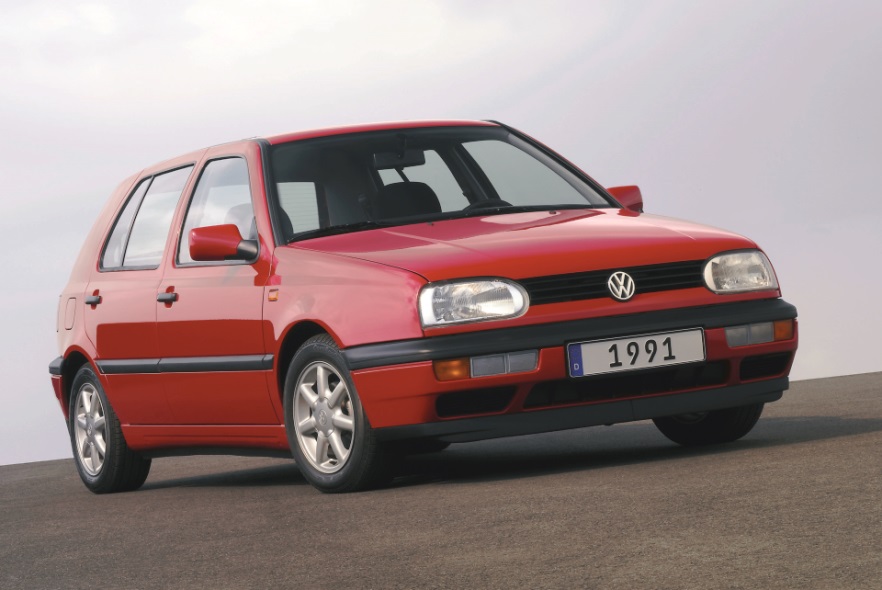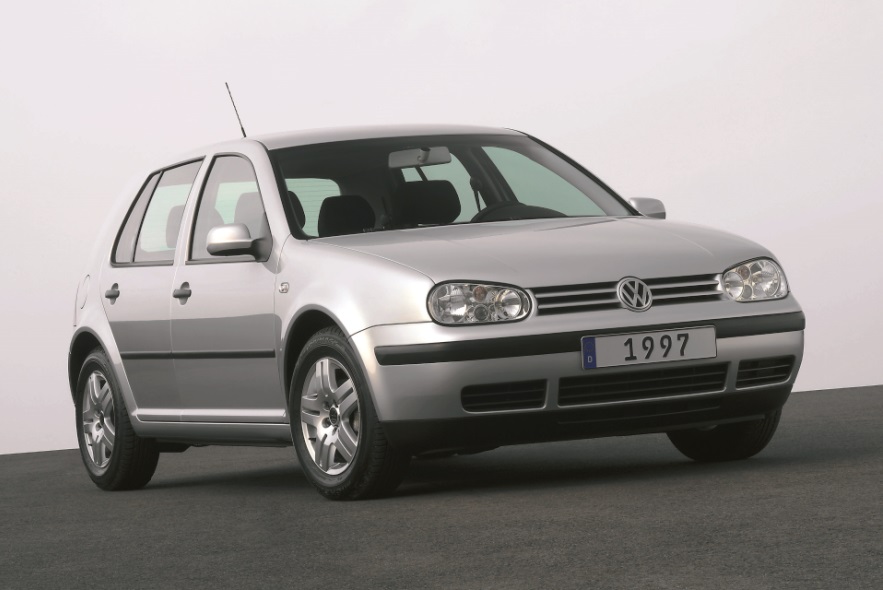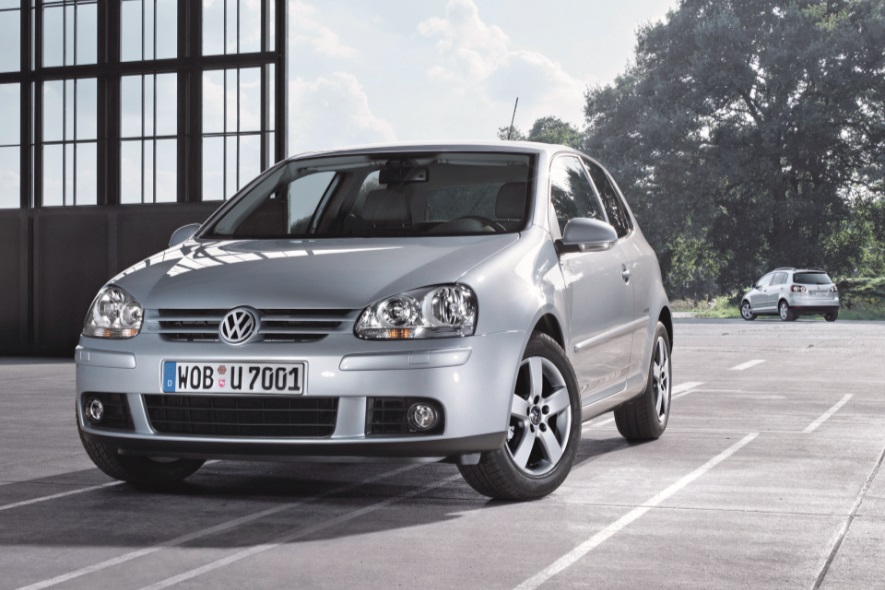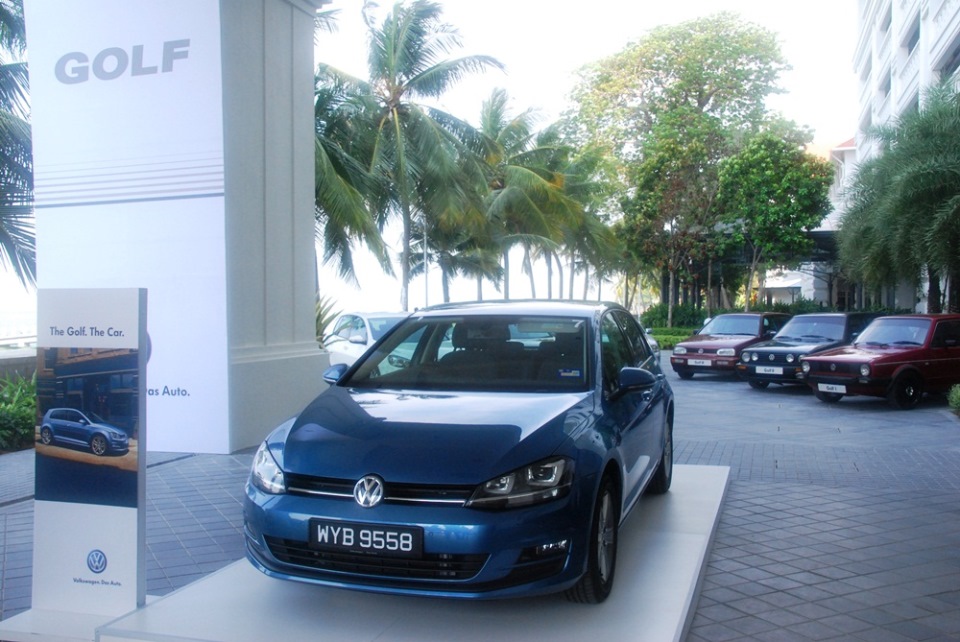History – 40 years of the Volkswagen Golf
The Volkswagen Golf turned 40 over the weekend; 29 March 1974 was the date which the first-generation Golf rolled off the assembly line in Wolfsburg, and since then seven generations of the Golf have found their way into 30 million homes in the elapsing 40 years.
In today’s special feature, we look back at the history of one of the world’s most recognized automotive nameplates – the Volkswagen Golf.
Golf I (1974 – 1983): The first generation Golf was conceived to take over from the Beetle as Volkswagen’s people’s car. A revolutionary car for its time, the Golf had incorporated technologies acquired by Volkswagen from its takeover of Audi such as water-cooled engines and front-wheel drive installation. It was also the first Volkswagen model to utilize a transverse engine layout; early FWD VWs had their engines mounted longitudinally, a practice that continues with Audi vehicles today.
The Golf I was an immediate success, hitting the one million unit mark in October 1976, a mere two years from its introduction. A number of successful derivatives was spawned, such as the Golf GTI and Golf D (naturally aspirated diesel) in 1976, the Golf Cabriolet in 1979, and the Golf GTD turbodiesel in 1982.
Golf II (1983 – 1991): Taking the baton from the nine-year old Golf I, the Golf II was a bigger car that offered more interior space. It served the market for eight years, and was the first to offer regulated catalytic converter (1984), anti-lock braking system (ABS, 1986) and power steering in its class. An all-wheel drive version, dubbed syncro those days, was introduced in 1986.
Golf III (1991 – 1997): The Golf III marked the start of increasingly short model life-cycles for the Golf. The third-generation model had a product life-span of six year, but continued its predecessor’s traditions of pioneering new technology in its class.
Many new features debuted in this version of the Golf; the VR6 six-cylinder engine, cruise control, oxidation catalytic converter for diesel engines (1991) and the first direct injection diesel engines (TDI in 1993). ABS was made standard on all variants in 1996, and this was the first Golf with an estate, dubbed the Golf Variant.
Golf IV (1997 – 2003): The Golf IV continued the agenda of safety that was laid on by the Golf III with the introduction of electronic stability control first as an option in 1998 and standard just a year on. The all-wheel drive version now gains a new 4Motion moniker, and it is the first in the lineage to use a Haldex clutch. This version of the Golf also debuted petrol direct injection (FSI) and the performance R32 version was the first to receive the DSG dual clutch transmission.
The Golf IV’s time also coincided with the rise of a new star from Ford, which leads us nicely to….
Golf V (2003 – 2008): The Ford Focus’ introduction in 1998 raised the dynamic threshold of the C-segment by considerable levels. Ford’s revolutionary Control Blade multi-link rear suspension gave the Focus a dynamic advantage that none of its segment competitors, including the Golf IV, was able to surpass.
The Focus’ success stung Volkswagen to raise its game considerably with the Golf V. Laser-welded bodywork made the Golf V 35% stiffer than its predecessor, and it also became the first Golf equipped with independent rear suspension. Other innovations that debuted with the Golf V include the 7-speed DSG and the 1.4-litre twincharged TSI engine.
Golf VI (2008 – 2012): Essentially a major update of the Golf V, the Golf VI was the shortest-living member of the Golf lineage thus far, with a product life-span of only four years. The briefness of its tenure nevertheless did not stop VW from shipping a considerable 2.85 million units worldwide. The Golf VI also happened to be the first Golf that was sold in significant numbers in Malaysia. Before the 1.4 TSI arrived in 2010, our market had a unique distinction of being the only one in the world where the Golf GTI outsells the regular Golf.
See also:
– Volkswagen Golf R Test Drive Report
Golf VII (2012 – present): Based on Volkswagen’s revolutionary MQB transverse engine platform, the Golf VII, despite its evolutionary appearance over the Golf VI, sports an all-new chassis and powered by a range of new generation petrol and diesel engines. Weight reduction is considerable, with over 100kg of mass removed from its predecessor. Depending on engine selection, a user moving over from an equivalent variant of the Golf VI can enjoy fuel savings of up to 23%.
The Golf VII is also notable for making big strides into electrification; the all-electric e-Golf with a 190km cruising range is commercially available in selected markets, and just introduced is the Golf GTE performance plug-in hybrid with rated outputs of 204hp and an all-electric zero-emission cruising range of 50km, making it a feasible low-emissions performance vehicle suitable for daily use.
See also:
– Volkswagen Golf Mk VII tested in Sardinia, Italy
– Volkswagen Golf Mk VII launched in Malaysia
– 2013 Volkswagen Golf GTI Test Drive Review
KON
Pictures: AW archive and official VW release.
































